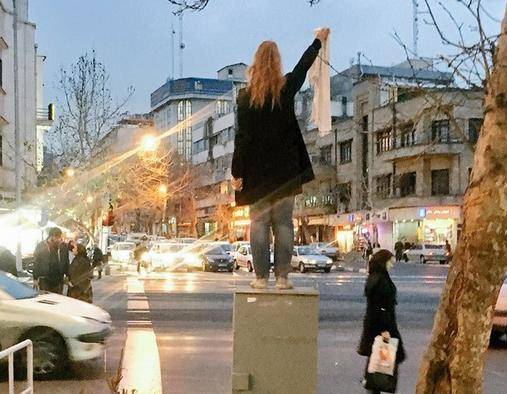Head of Iranian Parliament’s Women’s Faction reports that their faction has been investigating the protests against compulsory hijab in Iran that started as of December 2017. She added that sessions to review these protests, where a number of sociologists as well as representatives of the judiciary and the executive branch will be in attending are underway.
In an interview with Jamaran News, Parvaneh Salahshouri (MP) said on Monday April 2 that compulsory hijab has become law in Iran and as such it has to be heeded even by protesters.
She criticized the judiciary branch that has been brutally suppressing the protesters, saying that the judiciary and its agents should not accuse protesters of national security crimes and they should stick to the law of compulsory hijab for any further prosecution. The judiciary has been charging protesters against compulsory hijab law with crimes like “disruptors of national security and linkages to foreign powers.”
In a speech on March 8, International Women’s Day, the Islamic Republic Supreme Leader Ali Khamenei reacted to the protests against compulsory hijab saying: “They spent so much money and spread such propaganda and only managed to deceive a few young women here and there to take of their hijab off and all their efforts amounted to this insignificant outcome.”
Parvaneh Salahshouri was quoted as saying however that the protest against compulsory hijab is nothing new. “The movement against compulsory hijab has been going on in different forms; however we should not attribute the new manifestation of it to elements from abroad and think that its direction comes from beyond our borders. The critics of compulsory hijab do not belong to any particular age group or gender.”

Salahshouri emphasized that the protesters against compulsory hijab are not just women but also men.
In December Vida Movahedi a young Iranian woman climbed a platform on Enghelab Street, one of Tehran’s major arteries, and waved her white headscarf attached to a stick in the air. Her act was interpreted as protest against compulsory hijab and replicated by several other women in the country who came to be dubbed as Women of Enghelab Street.
In March Nargess Hosseini, one of the Women of Enghelab Street was sentenced to one year in jail by Iranian judiciary for “corruption and committing a haram act by removing her hijab in public”. Later another Woman of Enghelab Street, Maryam Shariatmadari was also sentenced to one year imprisonment.

Salahshouri told Jamaran that the Ministry of Interior should issue permits to those who wish to stage protests against compulsory hijab and urged female protesters not to remove their hijab during these protests and comply with the current law.
“Our women can protest to the very hijab they don. These protesters are not against the regime. They are neither corrupt, nor spies. They are simply protesting against an issue,” Salahshouri said.
She went on to say that women in Iran face more pressing problems such as “education rights and age of matrimony”.
Hardliner Ahmad Jannati, head of Iran’s Assembly of Experts has accused the protesters against compulsory hijab of “debauchery”. Jannati’s adverse sentiments toward the Women of Enghelab Street is echoed by many senior members of the clergy in Iran such as Ayatollah Mesbah Yazdi and Ayatollah Makarem Shirazi. While Salahshour stated that the late founder of the Islamic Republic Ayatollah Khomeini was not keen on compulsory hijab, Ali Khamenei claimed in his recent speech that despite statements from critics, Ayatollah Khomeini “stood as strong as a mountain saying we must have the hijab.”
Via Radio Zamaneh






